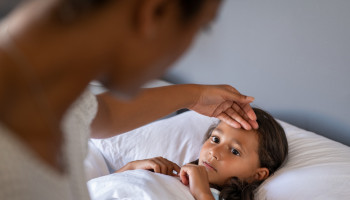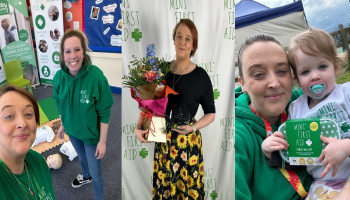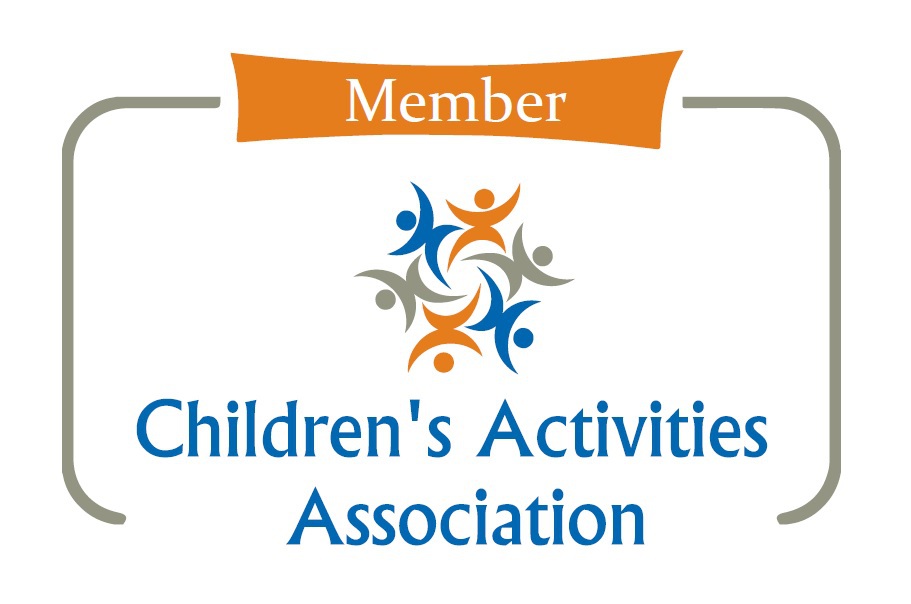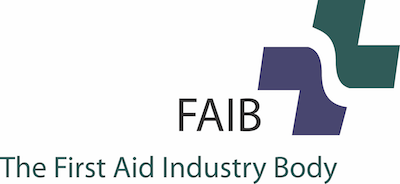This week we have teamed up with the RNIB (The Royal National Institute of Blind People) to bring you an important blog about children’s eye health. Statistics show that as many as 1 in 5 school-aged children in the UK could have an undiagnosed eye condition, and as parents, it’s important that we know how to look after our children’s eyes. This week’s blog will talk you through the common childhood eye conditions, signs there may be a problem and what you can do to support your child’s eye health.
Why is it so important that eye health issues are picked up early?
Although serious vision problems during childhood are rare, routine eye checks are offered to newborn babies and young children to identify any problems early on. The sooner any eye problem is found and diagnosed, the sooner you and your child will be able to get any treatment and support needed.
A serious vision problem is often referred to as having a visual impairment. A common definition for this is when “a person’s sight cannot be corrected with glasses or contact lenses”. If eligible they would then be registered Sight Impaired (partially sighted) or Severely Sight Impaired (blind).
There are lots of eye conditions that can be treated; examples of these are listed below, but some are more difficult to treat as your child gets older.
Children may not realise they have an issue so, without routine tests, there's a risk a problem may not be spotted. This may affect their development and education.
What are some of the common eye problems in babies and children?
- Lazy eye – this is where the vision in one eye doesn’t develop properly, so the other eye has to over-compensate – their “good” eye. It’s estimated 1 in 50 children develop a lazy eye.
- Squint – a squint occurs when the eyes look in different directions. One of the eyes may turn in, out, up or down and the other eye will look ahead. A squint is unlikely to get better on its own, and might cause further problems if not treated early enough.
- Childhood cataracts – most people have heard about cataracts in relation to grandparents, but some babies can be born with them and children can develop them. They present as cloudy patches on the lens of the eye which can get bigger, meaning their eyesight increasingly worsens. Luckily childhood cataracts are rare.
- Short-sightedness – this usually starts from age 6 and is more common in children whose relatives are short-sighted. It’s a very common condition where you can’t see objects that are far away.
- Long-sightedness – usually associated with adults over 40 (tell me about it!), but can also affect babies and children. It makes objects close to us appear fuzzy and out of focus, making us squint to see things – left untreated this can cause a lazy eye or squint.
How will I know if my baby or child has an eye condition?
There are often no obvious signs that a baby or child has an eye condition, and it can be especially hard to tell with babies who can’t communicate and tell us what’s wrong! However, you can look out for the following:
Your child is unusually clumsy - This is a tricky one to tell especially with toddlers who can be very accident prone as standard! But if you notice your child is falling over or dropping things more often than usual and it’s not improving, this could be a sign of an undiagnosed eye condition.
Your child’s eyes might point in different directions - One or both of your child’s eyes might not look straight forwards, and this is often a sign that they are experiencing problems with their vision.
Your child has difficulty reading - Vision problems might mean your child loses their place regularly when reading or you might see that they are holding their book very close to their face in order to read. They might also be reluctant readers because they find it such hard work – something worth considering if you have frequent battles over your child’s homework!
Your child suffers from frequent headaches - Headaches, especially towards the end of the day, may be a sign of an eye problem. Your child might also describe a feeling of their eyes “straining” to see, if their vision has become blurry.
Your child has hand-eye co-ordination problems - If your child really struggles with catching or kicking a ball this could suggest a hand-eye co-ordination issue. Hand-eye co-ordination problems can also manifest in messy handwriting and problems with reading.
Your child regularly rubs their eyes or squints - If your child has a sight problem, they are likely to be feeling the strain on their eyes, resulting in rubbing them in an attempt to alleviate the strain. Rubbing can also be a misplaced effort to “clear” their eyes. Squinting comes about as they aim to see fuzzy, blurry objects more clearly.
Your child might sit too close to the TV - Perhaps an obvious one, but all too easily missed in the hecticness of family life. Try moving them backwards and if they keep gravitating closer when not under supervision, it may be because they literally need a better view!
What should I do if I think my child might have an eyesight issue?
If you have noticed some of the signs above and have concerns about your child’s vision, go to see your GP or book an appointment with your local opticians.
Many people don’t realise that children can have an eye test at any age – they don’t need to be able to read or even speak! An eyesight test is especially important if there is a history of childhood eye problems in your family.
Children’s eye tests are free and with the right optician can actually be quite a fun experience for your little one – my daughter enjoyed her eye test so much she wanted to go back again the following week 🤣

What can parents do to help look after their children’s eyes?
The RNIB has some suggestions for looking after your children’s eye health:
Follow the 20/20/20 rule
Whilst there is no reason to believe that looking at television, tablets and phones will result in your child wearing glasses, it is a good idea to always follow the 20/20/20 rule when your children are watching TV or using devices.
The 20/20/20 rule means that for every 20 minutes children are looking at screens, they should look away from them to look at something at least 20 feet away, for at least 20 seconds. This gives their eyes a break from the screen, and forces them to focus on something in the distance before returning to looking at a screen up close.
Wear sunglasses
It’s perhaps surprising, but it does make sense that UV light is just as damaging to the tissues of your children’s eyes as it is to their skin. So whenever you think you need to put sunscreen on your child, make sure you automatically put their sunglasses on too! When buying sunglasses make sure they carry the BSEN 1836:2005 or CE kite marks so that your children’s eyes are properly protected from the sun’s harmful rays.
Take them for regular eye tests
Half of childhood eye conditions can be prevented and the sooner they are spotted, the sooner they can be treated. The RNIB recommend that your child should have an eye test at least once every 2 years.
We hope
this has given you some food for thought – I’ll be honest, I hadn’t appreciated
how regularly children should have an eye test and the importance of
sunglasses, so writing this has been a learning curve for me!
All the
best, Mini First Aid’s Charlotte and the RNIB x
If you’d like to know more about the RNIB you can take a look here – they offer a support helpline (0303 1239999) and email (cypf@rnib.org.uk) for anyone struggling with their children’s eye health. Mini First Aid are thrilled that the RNIB will be supporting our in-house training sessions, helping our first aid trainers in their understanding of eye health conditions so we can offer the best training opportunities possible to our customers.
Sources: The RNIB, NHS England
Toddler troubles?!

Mini First Aid love this Home Safety Starter pack, an absolute must for families with crawling babies and toddlers. Our homes are the most common place for your child to have an accident, so make sure you have done all you can to protect them from harm. This 17 piece pack contains:
- 1 x Top Drawer Catch
- 2 x Lower Drawer Catch
- 1 x Multi-purpose Block
- 1 x Double Door Block
- 4 x Corner Protector
- 6 x Socket Covers
- 1 x Door Slam Stopper
- 1 x Choke Tester
We think this would make a fantastic Christmas pressie for toddler parents or grandparents doing that all important childcare!









